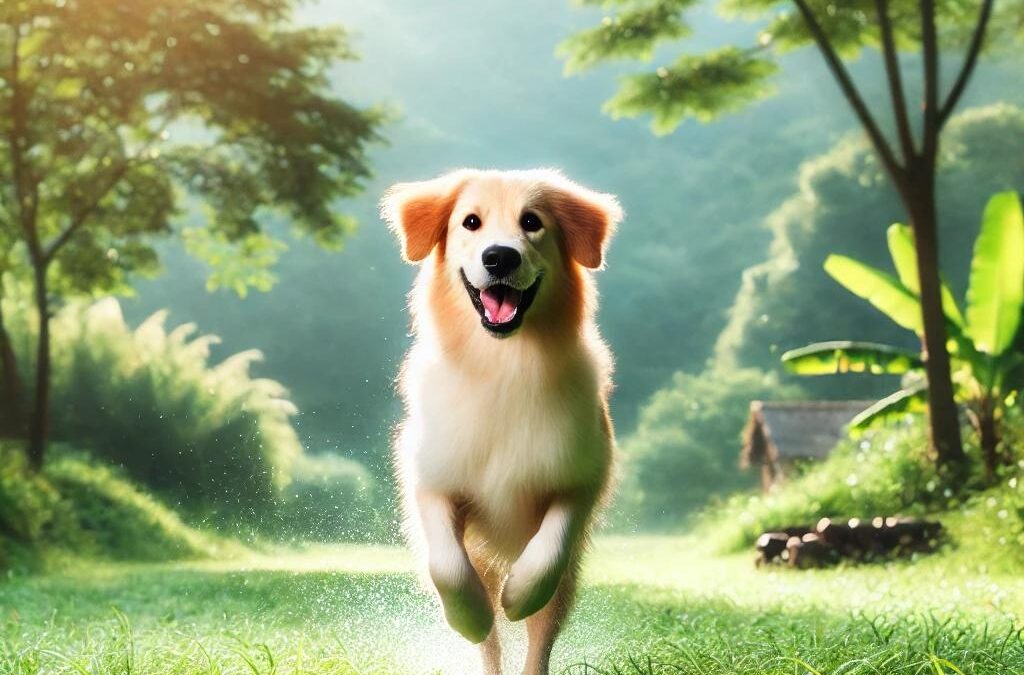Pollution is an increasing concern for both humans and animals, and recent research shows that it can play a significant role in the development of cancer in dogs. As our environment becomes more contaminated by chemicals, pesticides, and air pollutants, dogs are being exposed to harmful substances that may contribute to the rise of cancer cases among pets. Understanding how pollution affects our canine companions and taking preventive measures can help reduce the risk of cancer and other health problems in dogs.
How Pollution Affects Dogs
Dogs are exposed to environmental toxins in many ways, from the air they breathe to the surfaces they walk on and even the food they eat. Their close contact with the ground and their natural behaviors, such as licking and sniffing, make them particularly vulnerable to pollutants.
Common Sources of Pollution for Dogs:
- Air Pollution: Dogs living in urban areas are constantly exposed to smog, industrial chemicals, and car emissions. Just like humans, dogs can inhale these airborne toxins, which may cause respiratory problems and increase the risk of cancers, particularly lung and nasal tumors.
- Pesticides and Herbicides: Pesticides used in lawns, parks, and public areas are one of the most common sources of toxic exposure for dogs. When they walk on chemically treated grass or play in gardens sprayed with pesticides, these substances can be absorbed through their paws or ingested when they lick themselves.
- Water Contamination: Polluted water sources, including lakes, rivers, and even tap water, can expose dogs to harmful chemicals like lead, arsenic, and industrial waste. Drinking contaminated water over time can lead to a buildup of these toxins in their bodies, increasing the risk of cancer and other health issues.
- Household Chemicals: Many household products, including cleaning agents, paints, and insecticides, contain toxic ingredients that can affect dogs. Long-term exposure to these chemicals, especially in poorly ventilated homes, can contribute to the development of cancers, such as lymphoma and bladder cancer.
Types of Cancer Linked to Pollution
While cancer in dogs can result from genetic factors, environmental toxins also play a crucial role in many cases. Here are some types of cancers that have been linked to pollution in dogs:
1. Lung Cancer
Lung cancer in dogs can be caused by prolonged exposure to air pollution, cigarette smoke, and industrial pollutants. Dogs living in urban areas with poor air quality are at a higher risk of developing lung cancer due to continuous inhalation of harmful particles and chemicals.
2. Lymphoma
Lymphoma is one of the most common cancers in dogs and is often associated with exposure to pesticides, herbicides, and other chemicals. Studies have shown that dogs living in homes or neighborhoods where lawns are frequently treated with pesticides are more likely to develop lymphoma.
3. Bladder Cancer
Certain chemicals found in herbicides and insecticides have been linked to bladder cancer in dogs. Dogs that are frequently exposed to treated lawns or live near areas where these chemicals are heavily used may be at a higher risk.
4. Nasal Cancer
Nasal cancer in dogs has been linked to long-term exposure to secondhand smoke, smog, and industrial pollutants. Dogs with long noses (dolichocephalic breeds) are particularly susceptible to developing nasal tumors when exposed to airborne toxins.
5. Mammary and Skin Cancers
Pollutants in the environment, such as UV radiation from the sun combined with chemical exposure from cleaning agents and pesticides, can increase the risk of mammary and skin cancers in dogs.
Steps to Protect Your Dog from Pollution
While you can’t completely shield your dog from environmental pollutants, there are several steps you can take to minimize their exposure and reduce the risk of cancer.
1. Limit Exposure to Air Pollution
- Avoid walking your dog during high-traffic hours or in areas with heavy industrial activity.
- Keep windows closed on days with poor air quality and use air purifiers at home to reduce indoor pollution.
- If you are a smoker, avoid smoking near your dog to prevent exposure to secondhand smoke.
2. Choose Natural Lawn Care
- Opt for organic or pet-safe lawn care products that do not contain harmful pesticides or herbicides.
- Avoid letting your dog walk on freshly treated lawns or play in areas where chemicals have been recently applied.
3. Provide Clean Drinking Water
- Use filtered water for your dog’s drinking water to remove potential contaminants like heavy metals and chemicals.
- If your dog swims in lakes or rivers, make sure these water sources are clean and free of pollutants.
4. Use Non-Toxic Cleaning Products
- Choose pet-safe, non-toxic cleaning products for your home. Many green or eco-friendly products are formulated without harmful chemicals that could pose a risk to your dog’s health.
- Ensure that your dog is not present when using strong chemicals or during painting or renovation projects.
5. Regular Veterinary Check-ups
- Routine vet visits are crucial for early detection of any health issues, including cancer. Discuss any concerns about your dog’s environment with your vet to ensure that they are screened for potential exposure-related risks.
- Ask your vet about cancer-preventive measures, such as supplements or dietary changes, to help boost your dog’s immune system and overall health.
Pollution is an unavoidable part of modern life, but understanding the risks it poses to dogs and taking proactive steps can help reduce the chances of pollution-related cancers. By limiting your dog’s exposure to harmful chemicals in the air, water, and environment, you can contribute to their long-term health and well-being. Regular veterinary care, combined with careful attention to your dog’s surroundings, can play a vital role in preventing cancer and other serious health issues caused by pollution.


